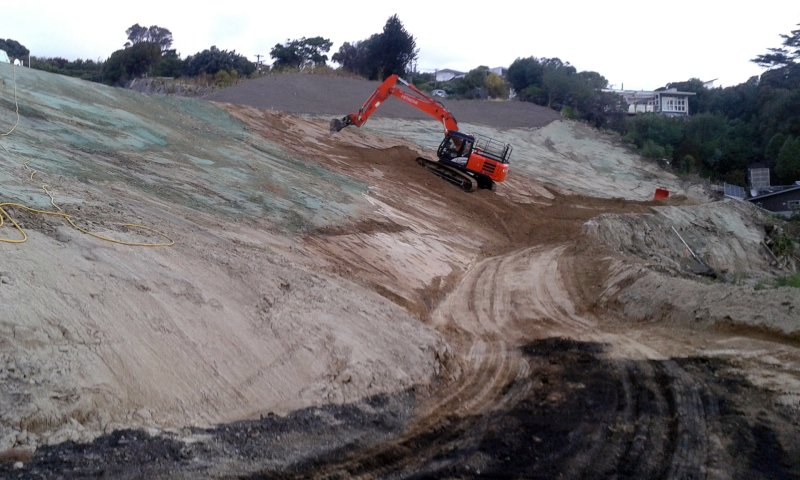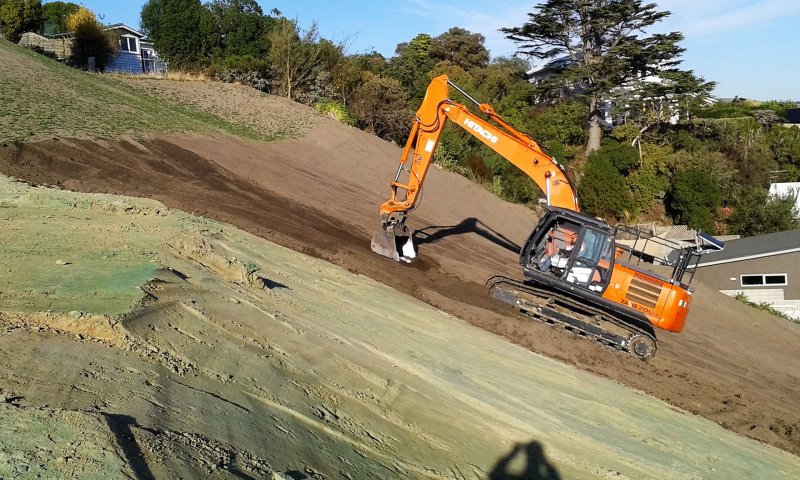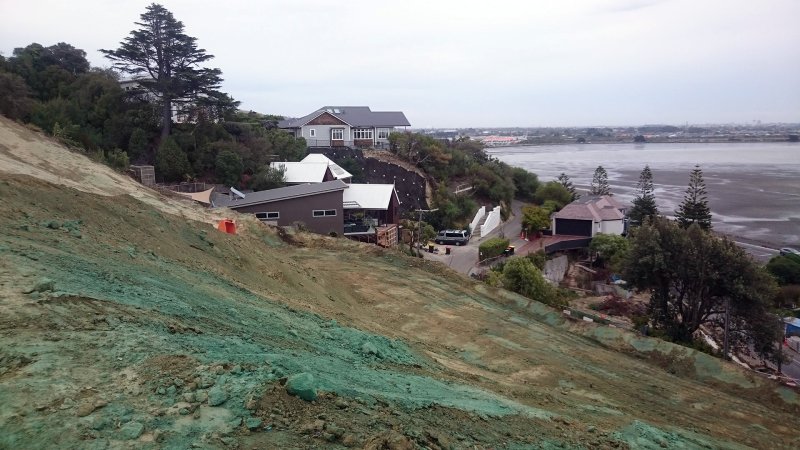Background
New Zealand’s Canterbury 2010/11 earthquakes caused significant land damage in the Port Hills region, prompting the undertaking of remediation projects to ensure public safety.
The area was identified as being at risk of mass movement during future seismic or significant rainfall events, with the potential for property damage, injury, or loss of life.
To reduce this risk, the decision was made to “de-load” the slope by excavating 12,000m² of surplus loess and constructing a stabilised engineered final landform.
Challenge

The loess in Port Hills is known for its highly dispersive nature and is difficult to manage and control once in suspension.
Given the slope, scale and soil type, traditional sediment controls were not suitable for this project, especially with limited space available for effective water retention ponds.
Seasonal climatic variation was also expected to create significant dust issues across the site, with residential properties located as close as 15 metres from the exposed cuts.
The Canterbury region is known for long, hot, dry summer days. In this case, conditions were expected to intensify due to the ongoing El Niño event.
Solution

A progressive point-source stabilisation program using Vital Bon-Matt Stonewall was implemented throughout the life of the project.
Vital Bon-Matt Stonewall has been independently tested to deliver high levels of in-ground stabilisation, curing instantly, reducing the risk of remobilisation once cured.
The program was designed with consideration for future weather patterns and site reworking.
Vital Chemical products provided effective stabilisation and were easily applied by site contractors, with full onsite support and training.
Result

The use the program using Vital Bon-Matt Stonewall successfully reduced erosion and fugitive dust emissions throughout the project lifecycle, including during the high-rainfall autumn and winter seasons.
In addition, progressive point-source stabilisation delivered cost savings by reducing the need for sediment controls onsite, along with associated maintenance and decommissioning requirements.
The project was fully compliant and completed on time and on budget.
Infrastructure Sustainability Council

Vital Chemical’s growing portfolio of ISupply listed products help our clients to achieve IS ratings through the delivery of proven innovations and sustainable outcomes.



